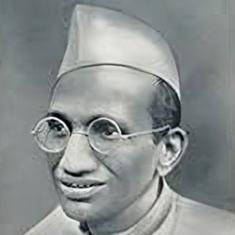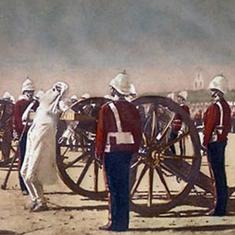England finished their first innings at 477 runs. It was the third time in this series that they have crossed the 400-mark after winning the toss. In Rajkot, they just about managed to put enough pressure on India as the match progressed. In Mumbai, they were blown away by Virat Kohli’s excellence and lost within 30 minutes on day five.
“We are in a good position. From the team’s point of view, we want to finish on a high,” said Liam Dawson, after his maiden Test half-century helped his side to safety. It provided the answer to one pertinent question – where is this match headed?
Slow pace of scoring
England lost Ben Stokes and Jos Buttler within the first hour of play. They were placed at 300/6 at that point. It was better than what they had managed in both Visakhapatnam (255 all out) and Mohali (283 all out) in their respective innings.
And yet, the Chennai pitch factored in. At present it is a sterile surface. Any movement afforded to both pacers and spinners was gone after the first hour on day one. Since then, it has been a good track to bat on. That England were not in a stronger position is an ode to the continued efforts of the Indian bowling, who are not going easy in a dead rubber.
The work they put in to get Moeen Ali out was brilliant. Perhaps for a lack of pace, they did not work out the short ball ploy on Friday. Maybe they were missing Mohammed Shami, who would have assuredly banged it in to Ali. Whatever said and done, the left-hander escaped the bouncer barrage on day one and stroked his way to a hundred.
This morning he was bombarded, and Kohli placed his best outfield catcher, Ravindra Jadeja, at deep midwicket. The fielder though was not all the way to the boundary; instead he was standing in, enough for the mishit to come his way. When it did, England were staring down the barrel at 321/7. Was this going to be another case of missed opportunity for the visitors?
Indeed they were headed for a sub-par total on this pitch until Dawson and Adil Rashid played the rescue act. The latter had hardly scored anything of note in this series, and he made up for it by bringing forth his entire application prowess.
Dawson played for time, and him being an unknown commodity played against the bowlers. They needed to identify his weakness and exploit it. Only they could not, because India were getting frustrated with the flow of runs. Mind you, the run-rate never crept past three per over. Yet, the elongated last wicket stand was not on Kohli’s agenda for the day as the skipper made umpteen bowling changes in the second session.
Endgame for Mishra?
When you have a leg spinner in the side, one in full flow, you invariably throw him the ball whenever faced with a fighting lower order. The tail-enders look for runs and whilst scoring is easier, the leggie will get you wickets. Amit Mishra has not done so, either in Rajkot or here in Chennai.
There is an explanation for this. Most leg spinners are confidence bowlers. Someone like a Shane Warne does not need a daily dose from his captain though. He would perhaps stand in front of the mirror before play each morning, and tell himself that he is the best in the business. Perhaps that’s how it worked for the Australian legend.
Someone like Mishra needs the captain to be around him all the time. It is the reason why it did not work with MS Dhoni, for he was not one to feed the bowlers. He would set fields and expect them to stick to the team plan. If not, any feedback would come later on, when the session or even the game was slipping away.
Kohli is a bit more direct in his approach, fidgeting all the time to make changes. The complication arises in this scenario in the presence of Jadeja and Ravichandran Ashwin. In them, he has arguably the world’s best spinning combination for these conditions, and does not need to look beyond.
Mishra’s role becomes a holding one, wherein he comes for a spell and then goes back to fielding. He bowled seven overs in the second session, when India were desperately searching for a breakthrough. None of them inspired enough to cause trouble, as was the case in the first Test.
He was replaced by Jayant Yadav thereafter, and with the next series a month or so away, Mishra should fear for his Test career.
Where is this Test headed?
“It has only been two days. There is still a lot of cricket to be played in this series. It is important for us to make runs and then try to get them out quickly in the second innings. We will have to see how the wicket behaves in a couple days’ time,” said Umesh Yadav, after the day’s play.
It is a reason to worry for England. Be it pacers or spinners, their bowlers have been second best throughout this series, barring the second innings in Rajkot. However, they had a higher score to put pressure on India, and Stokes’s hundred had given them ample time to bowl out the hosts and then bat again.
The slow pace of scoring today has meant that two days have gone past with India’s innings only just getting underway. Time is not on England’s side here, but that could change if the Indian batsmen score at a good pace. But that would mean squandering a position of advantage once again. Putting a brake on the run scoring on day three thus assumes prime significance.
With the pitch not breaking at all yet, it seems England are once again caught out.









